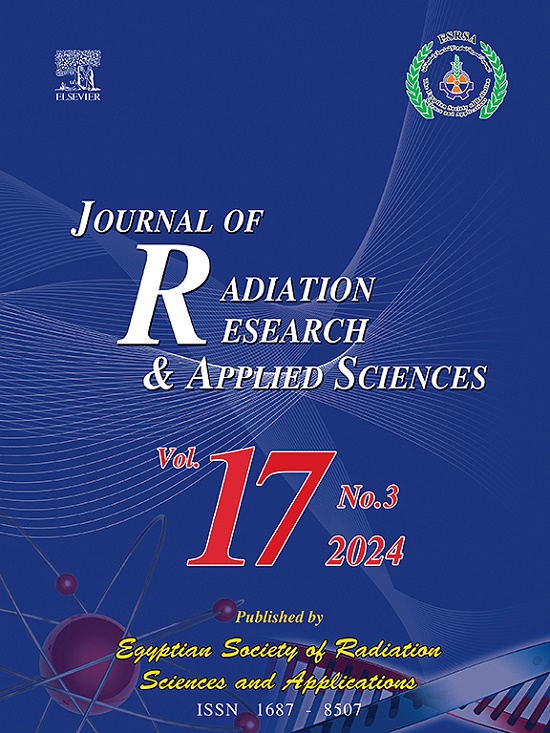热辐射和局部热不平衡对速度滑移条件下四杂化纳米流体MHD化学反应流动的影响
IF 1.7
4区 综合性期刊
Q2 MULTIDISCIPLINARY SCIENCES
Journal of Radiation Research and Applied Sciences
Pub Date : 2025-03-11
DOI:10.1016/j.jrras.2025.101405
引用次数: 0
摘要
本文研究了热辐射和速度滑移条件对四元混合纳米流体中MHD在倾斜旋转盘上局部热非平衡流动的影响。通过对滑移流的更多考虑,改进了目前的工作。最新研究利用一个基本的科学模型考察了局部热平衡条件不存在时的传热特性。两种不同的基本热梯度是由固相和液相的经典局部热平衡效应产生的。混合纳米流体含有氧化铝(Al2O3)、二氧化钛(TiO2)、银(Ag)和钴铁氧体(COFe2O4)纳米颗粒,并以流体水为基础。通过对复杂流体中的换热过程进行优化,可以提高热工换热器的效率。化学工程师可以利用其对反应动力学和热分布的见解,为化学反应构建更有效的反应器。利用bvp4c技术得到了有效转换控制方程的数值解。结果表明:随着两相传热和速度参数的增大,固相热场和液相传热比的增大,速度分布减小,而流体的热剖面和换热率的增大。本文章由计算机程序翻译,如有差异,请以英文原文为准。

Thermal radiation and local thermal non-equilibrium effects on MHD chemical reactive flow of tetra hybrid nanofluid with velocity slip conditions
The current article examines the impact of thermal radiation and velocity slip condition on the chemical reactive flow of MHD in tetra hybrid nanofluid across an inclined spinning disk with local thermal non-equilibrium conditions. The current work has been improved by taking slip flow into account more. The latest study examines the properties of heat transmission in the absenteeism of local thermal equilibrium conditions using a basic scientific model. Two distinct fundamental thermal gradients are produced by the local thermal equilibrium effects classical for both the solid and liquid phases. Tetra hybrid nanofluid containing, aluminum oxide ( , titanium dioxide and cobalt ferrite ( nanoparticles, and based fluid water is used. Through heat transfer process optimization in complicated fluids, it can improve heat exchanger efficiency in thermal engineering. Chemical engineers may be able to construct more efficient reactors for chemical reactions with its insights into reaction kinetics and thermal distributions. Numerical solutions to effectively converted governing equations have been obtained using the bvp4c technique. The findings indicate that as the interphase heat transmission and velocity parameter increase the solid phase's thermal field and the liquid phase's ratio of heat transmission, velocity distribution drop, while the fluid phase's thermal profile and increasing rate of heat transfer.
求助全文
通过发布文献求助,成功后即可免费获取论文全文。
去求助
来源期刊

Journal of Radiation Research and Applied Sciences
MULTIDISCIPLINARY SCIENCES-
自引率
5.90%
发文量
130
审稿时长
16 weeks
期刊介绍:
Journal of Radiation Research and Applied Sciences provides a high quality medium for the publication of substantial, original and scientific and technological papers on the development and applications of nuclear, radiation and isotopes in biology, medicine, drugs, biochemistry, microbiology, agriculture, entomology, food technology, chemistry, physics, solid states, engineering, environmental and applied sciences.
 求助内容:
求助内容: 应助结果提醒方式:
应助结果提醒方式:


